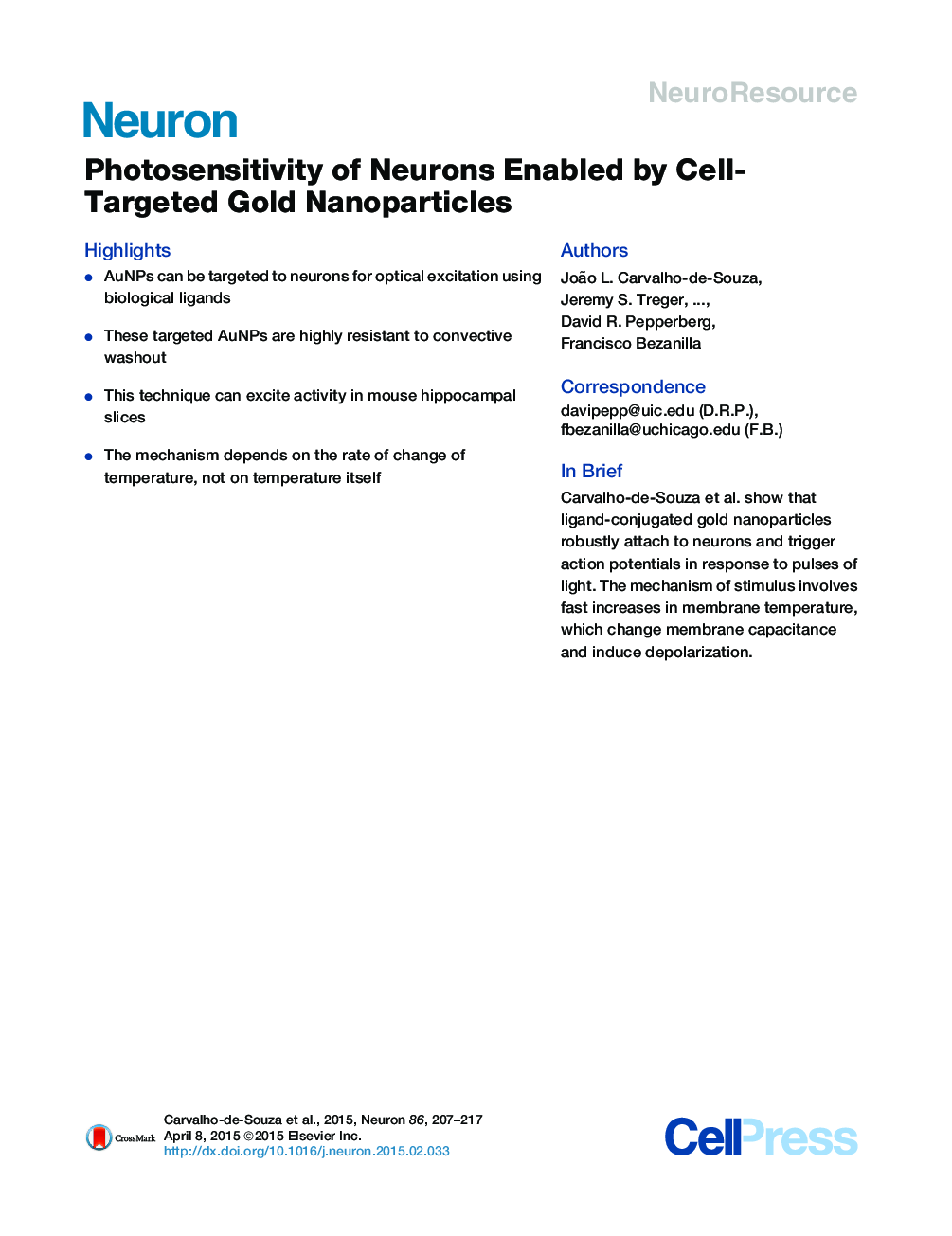| Article ID | Journal | Published Year | Pages | File Type |
|---|---|---|---|---|
| 4321007 | Neuron | 2015 | 11 Pages |
•AuNPs can be targeted to neurons for optical excitation using biological ligands•These targeted AuNPs are highly resistant to convective washout•This technique can excite activity in mouse hippocampal slices•The mechanism depends on the rate of change of temperature, not on temperature itself
SummaryUnmodified neurons can be directly stimulated with light to produce action potentials, but such techniques have lacked localization of the delivered light energy. Here we show that gold nanoparticles can be conjugated to high-avidity ligands for a variety of cellular targets. Once bound to a neuron, these particles transduce millisecond pulses of light into heat, which changes membrane capacitance, depolarizing the cell and eliciting action potentials. Compared to non-functionalized nanoparticles, ligand-conjugated nanoparticles highly resist convective washout and enable photothermal stimulation with lower delivered energy and resulting temperature increase. Ligands targeting three different membrane proteins were tested; all showed similar activity and washout resistance. This suggests that many types of ligands can be bound to nanoparticles, preserving ligand and nanoparticle function, and that many different cell phenotypes can be targeted by appropriate choice of ligand. The findings have applications as an alternative to optogenetics and potentially for therapies involving neuronal photostimulation.Video Abstract To view the video inline, enable JavaScript on your browser. However, you can download and view the video by clicking on the icon belowHelp with MP4 filesOptionsDownload video (30104 K)
